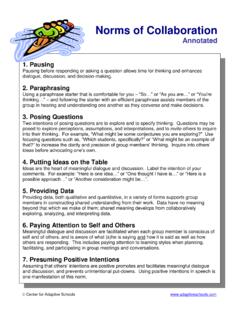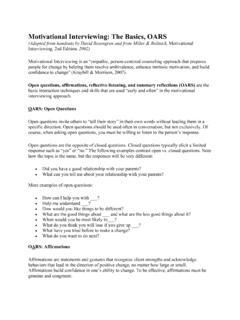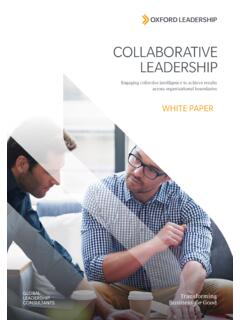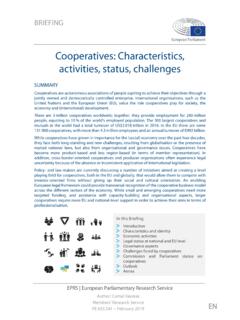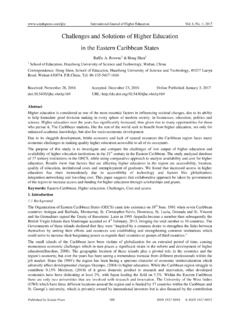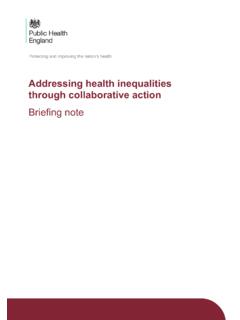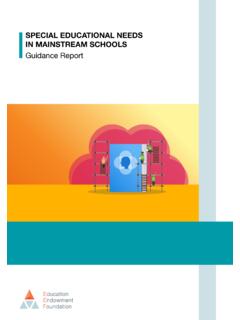Transcription of Benefits of Inclusive Education for ALL Students
1 The SWIFT Center provides the necessary framework to enable all Students to receive maximum educational benefit through the provision of intensive technical assistance to schools, districts, and states. The point of public Education is giving Students a foundation of learning that will help them build a career later in life. Thirty years of research shows us that when all Students are learning together (including those with the most extensive needs) AND are given the appropriate instruction and supports, ALL Students can participate, learn, and excel within grade-level general Education cur-riculum, build meaningful social relationships, achieve positive behavioral outcomes, and graduate from high school, college and beyond.
2 How do we transform Education to achieve these goals? According to the research, it takes administrative leadership, multi -tiered systems of support, family and community partnership, an Inclusive edu-cational framework including organizational structure and school culture, and policies and practices providing the backbone to these of Inclusive Education for ALL Students : Students without disabilities made significantly greater progress in reading and math when served in Inclusive settings. (Cole, Waldron, Majd, 2004) Students who provided peer supports for Students with disabilities in general Education classrooms demonstrated positive academic outcomes, such as increased academic achievement, assignment completion, and classroom participation.
3 (Cushing & Kennedy, 1997)No significant difference was found in the academic achievement of Students without disabilities who were served in classrooms with and without inclusion. (Ruijs, Van der Veen, & Peetsma, 2010; Sermier Dessemontet & Bless, 2013)Kalambouka, Farrell, and Dyson s (2007) meta-analysis of Inclusive Education research found 81% of the reported outcomes showed including Students with disabilities resulted in either positive or neutral effects for Students without disabilities. Time spent engaged in the general Education curriculum is strongly and positively correlated with math and reading achievement for Students with disabilities.
4 (Cole, Waldron, & Majd, 2004; Cosier, Causton-Theoharis, & Theoharis, 2013) Students with intellectual disabilities that were fully included in general Education classrooms made more progress in literacy skills compared to Students served in special schools. (Dessemontet, Bless, & Morin, 2012) Students with autism in Inclusive settings scored significantly higher on academic achievement tests when compared to Students with autism in self-contained settings. (Kurth & Mastergeorge, 2010)DC-CAS Reading and Math achievement gaps between Students with IEP s and their peers in three enculturated of district Academic Performance Indices (API) to Students with Domains and Core FeaturesAdministrative Leadership:Strong and Engaged Site LeadershipStrong and engaged site leadership is a key component for developing and sustaining Inclusive school practices.
5 (Ainscow & Sandhill, 2010; Waldron & McLeskey, 2010)Strong Educator Support SystemThe principal plays an essential role in developing Inclusive programs at schools. A case study of a principal at an effective Inclusive school identified the following characteristics of the principals role: caring for and investing in teachers, providing opportunities for distributed leadership, and protecting teachers from the pressures of high-stakes accountability. (Hoppey & McLeskey, 2010) multi -Tiered Systems of Support (MTSS): Inclusive Academic InstructionAn MTSS framework should be used to guide instruction, by using effective general Education strategies with all Students and increasing the level of support for some Students based on needs identified through screening and progress monitoring.
6 (Copeland & Cosbey, 2008; Sailor, 2009a, 2009b) Inclusive Behavior InstructionImplementing School-wide Positive Behavioral Interventions and Supports resulted in decreases in office discipline referrals, suspensions, and disruptive behaviors and increases in pro-social behavior (Bradshaw, Mitchell, & Leaf, 2010; Sailor, Wolf, Choi, & Roger, 2009; Sailor et al., 2006) Integrated Education Framework:Fully Integrated Organizational StructureFully integrated organizational structures allow all Students who need additional supports to benefit from resources that otherwise would only available to segregated populations of Students (Sailor, 2009a).
7 Strong and Positive School Culture Schools have cultures, and research from educational anthropologists ( , Ogbu, 1982, 1985) has shown repeatedly that the culture of schools is a strong influence on academic achievement. (Sailor, 2009a, p. 250) Family and Community Engagement:Trusting Family PartnershipsStudent achievement in the elementary grades (Goddard, Tschannen-Moran, & Hoy, 2001), middle school grades (Sweetland & Hoy, 2000), and high school grades (Hoy & Tarter, 1997) is likely to be higher in schools in which trusting partnerships exist than in schools in which partnerships and trust do not Community Partnerships Research indicates that when a collective group of school, family, and community stakeholders work together, achievement gaps decrease.
8 (Bryan & Henry, 2012, p. 408) Inclusive Policy Structure and Practice:Strong LEA/School RelationshipA strong and supportive relationship between individual schools and their districts is critical for sustainable school reform. (McLaughlin & Talbert, 2003)LEA Policy FrameworkA policy framework must exist at the school, district, state, and federal levels that is fully aligned with Inclusive reform initiatives and removes barriers to successful implementation. (Kozleski & Smith, 2009)ReferencesAinscow, M., & Sandhill, A. (2010). Developing Inclusive Education systems: the role of organisational cultures and leadership.
9 International Journal of Inclusive Education , 14(4), , C. P., Mitchell, M. M., & Leaf, P. J. (2010). Examining the effects of school wide positive behavioral interventions and supports on student outcomes: Results from a randomized controlled effectiveness trial in elementary schools. Journal of Positive Behavior Interventions, 12(3), , J., & Henry, L. (2012). A model for building school-family-community partnerships: Principles and process. Journal of Counseling and Development, 90(4), , C. M., Waldron, N., & Majd, M. (2004). Academic progress of Students across Inclusive and traditional settings.
10 Mental Retardation, 42(2), , S. R., & Cosbey, J. (2008). Making progress in the general curriculum: Rethinking effective instructional practices. Research and Practice for Persons with Severe Disabilities, 33(4), , M., Causton-Theoharis, J., & Theoharis, G. (2013). Does access matter? Time in general Education and achievement for Students with disabilities. Remedial and Special Education , 34(6), , L. S., & Kennedy, C. H. (1997). Academic effects of providing peer support in general Education classrooms on Students without disabilities. Journal of Applied Behavior Analysis, 30(1), , R.
